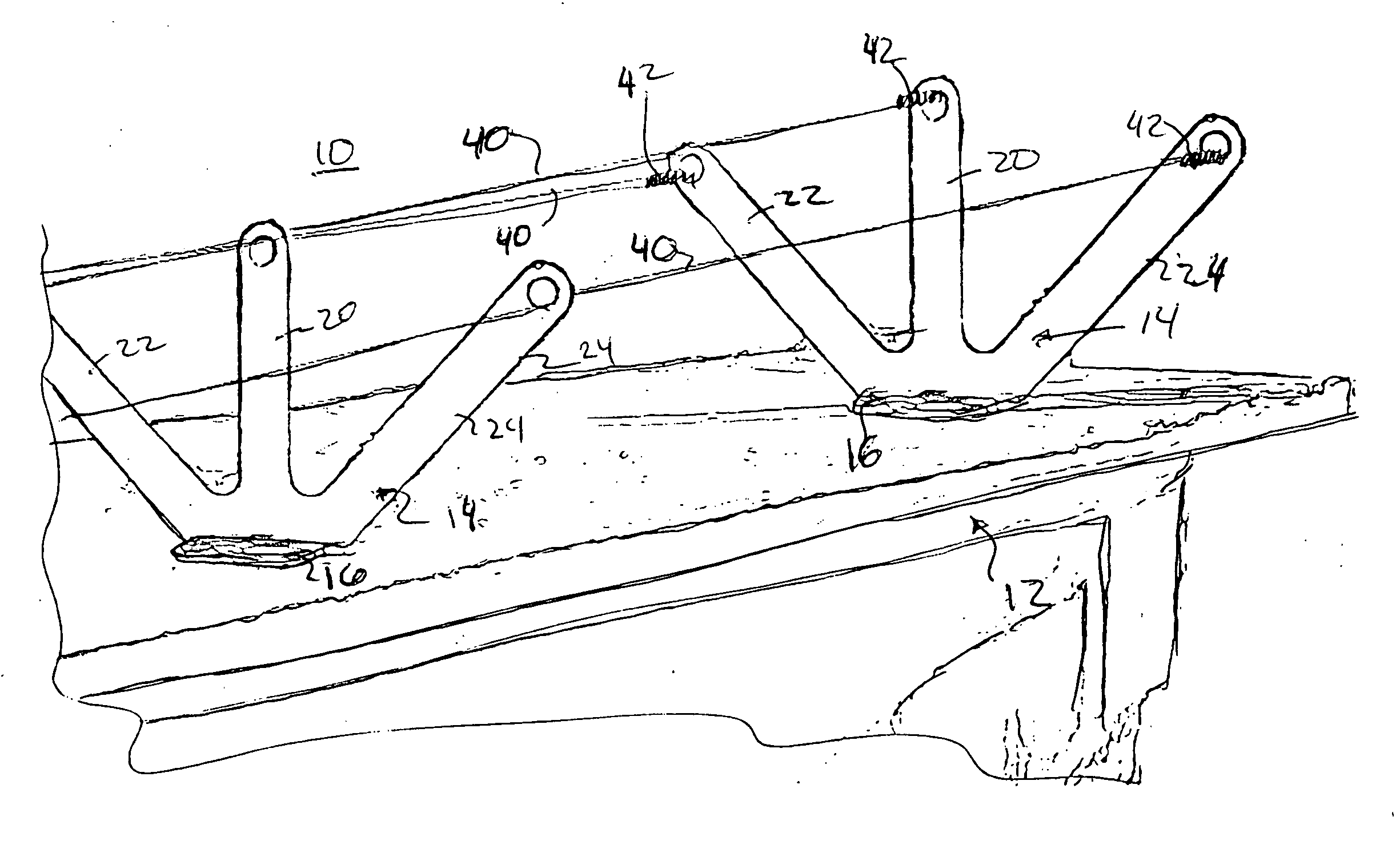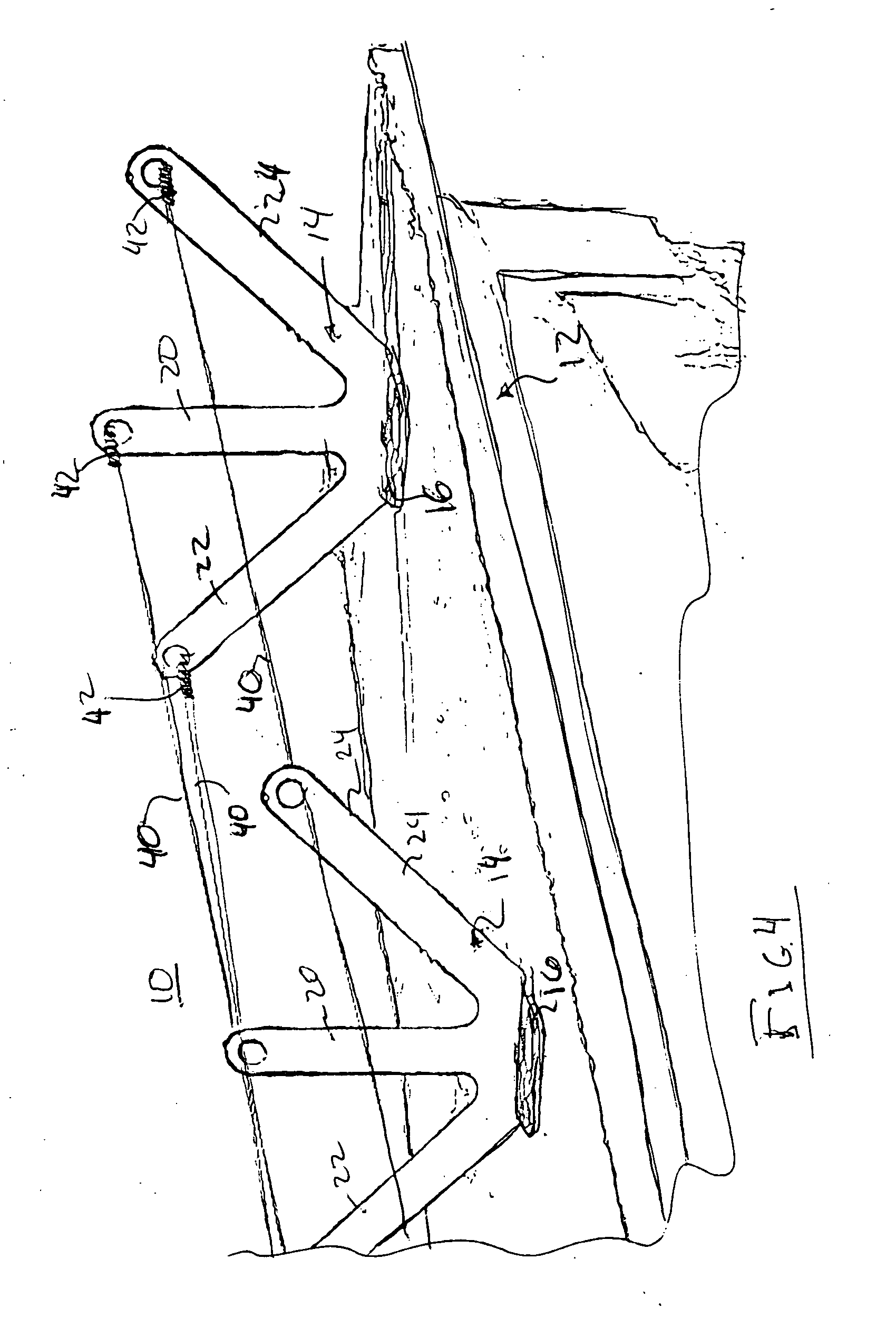Bird control arrangement
a technology of anti-birds and frames, applied in the direction of building components, roofing, animal husbandry, etc., can solve the problems of devices being often unsightly, defaced by stone and metal of buildings, and damaged by substrata of buildings, so as to facilitate the securement of brackets
- Summary
- Abstract
- Description
- Claims
- Application Information
AI Technical Summary
Benefits of technology
Problems solved by technology
Method used
Image
Examples
Embodiment Construction
[0024] Referring now to the drawings in detail, and particularly to FIG. 1, there is shown the present invention which comprises an anti-bird landing assembly 10 which is attachable to, for example, the ledge 12 of a structure such as for example, a building so as to prevent birds from landing or roosting thereon. The bird landing prevention assembly 10 comprises a plurality of support brackets 14, one bracket 14 being shown in FIG. 1, which are to be attached in a spaced-apart manner to the upper surface of a ledge 12 or the like of a building, as also represented in FIG. 4. Each support bracket 14 comprises a generally horizontally disposed base flange 16. A unitary upright frame portion 18 is arranged perpendicular to the base flange 16.
[0025] The upright frame portion 18 of the support bracket 14 comprises an elongated middle arm 20 which is in central alignment with and is perpendicular to the base flange 16. The upright frame portion 18 of the support bracket 14 also has an e...
PUM
 Login to View More
Login to View More Abstract
Description
Claims
Application Information
 Login to View More
Login to View More - R&D
- Intellectual Property
- Life Sciences
- Materials
- Tech Scout
- Unparalleled Data Quality
- Higher Quality Content
- 60% Fewer Hallucinations
Browse by: Latest US Patents, China's latest patents, Technical Efficacy Thesaurus, Application Domain, Technology Topic, Popular Technical Reports.
© 2025 PatSnap. All rights reserved.Legal|Privacy policy|Modern Slavery Act Transparency Statement|Sitemap|About US| Contact US: help@patsnap.com



